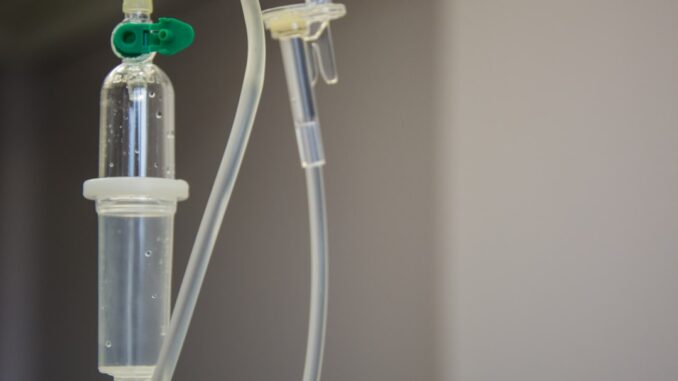
Summary
Golisano Children’s Hospital is at the forefront of a groundbreaking sickle cell treatment study, offering new hope for young patients battling this debilitating disease. This innovative research aims to improve the lives of children affected by sickle cell disease and potentially lead to a cure. The study focuses on novel gene therapies and advanced treatment options, paving the way for a brighter future in pediatric sickle cell care.
Secure patient data with ease. See how TrueNAS offers self-healing data protection.
Main Story
Sickle cell disease, a genetic blood disorder, impacts millions globally, with a disproportionate effect on people of African descent. If you’re not familiar, it causes red blood cells to become misshapen, leading to some seriously painful episodes, organ damage, and a sadly reduced lifespan. For a long time, we were stuck with just managing the symptoms. But now? Gene therapy’s offering real hope – a potential cure, even!
Golisano Children’s Hospital, part of the University of Rochester Medical Center, is right there at the forefront of this. Known for their dedication to kids’ health, they’re running a clinical trial looking at some pretty cool gene therapies for sickle cell. Think CRISPR-Cas9, that gene-editing tool you’ve probably heard about; it lets scientists target and fix the broken gene that causes the disease. It’s precise, it’s cutting edge. I mean, who wouldn’t be excited!
This trial’s building on some encouraging earlier studies, which showed gene therapy can fix the genetic flaw and get healthy red blood cell production back on track. Prior successes, while awesome, weren’t perfect. So, the trial at Golisano is trying to tweak and improve those methods, pushing for maximum effectiveness with minimal risks, naturally. They’re looking at different gene-editing techniques and delivery systems to make the therapy work best for their young patients. It’s not a one-size-fits-all approach.
And that’s what’s so exciting about this research, isn’t it? Imagine completely transforming the lives of kids with sickle cell. A successful gene therapy? It wouldn’t just ease symptoms and prevent complications. It could be a real, honest-to-goodness cure, freeing them from the burden of a lifelong illness. The impact on their quality of life, how long they live, and just how good they feel? Immense.
But it doesn’t stop there. The insights from this trial will boost our global understanding of sickle cell disease and help develop gene therapies for other genetic disorders, too. I mean, Golisano is really paving the way for a future where gene therapy is the standard treatment for all sorts of inherited diseases, or that’s the hope. It’s like a ripple effect.
Honestly, the study at Golisano Children’s Hospital is like a beacon for families dealing with sickle cell. It shows real progress in the fight against this tough condition, highlighting just how much potential gene therapy has. Researchers are constantly learning and refining these treatments, the dream of a cure is getting closer all the time. How amazing is that?
That said, it’s not all sunshine and rainbows. Even with the promise of gene therapy, we’ve still got challenges to face. Long-term safety and effectiveness? That’s absolutely key. Scientists are working hard to understand and reduce any potential risks linked to gene editing, like off-target effects or immune responses. We need to be cautious and thorough, no question.
Beyond gene therapy, Golisano Children’s Hospital is exploring other cutting-edge ways to treat sickle cell. New medications, stem cell transplants, and supportive therapies to manage symptoms and improve quality of life, you name it. Their approach is multidisciplinary, blending top-notch research with comprehensive clinical care, so patients get the best and most advanced treatments around.
These advancements, especially in areas like sickle cell, show a bigger trend of progress and innovation in pediatric care. Think telemedicine, mobile health apps, advanced imaging, and even artificial intelligence! Technology is changing how we deliver healthcare to children. It improves access to care, makes diagnoses more accurate, and personalizes treatment plans. Which all adds up to better outcomes, wouldn’t you agree?
The future of pediatric care is looking bright, driven by a thirst for knowledge and a commitment to improving children’s health and well-being. With hospitals like Golisano leading the way, patients and families can look forward to a future where diseases like sickle cell aren’t a life sentence. The research happening right now? It’s building a healthier tomorrow for children everywhere. I truly believe that.


The focus on personalized treatment plans is crucial. This tailored approach, combining gene therapy with other options, offers hope for improved outcomes and a better quality of life for young patients battling sickle cell disease.
Absolutely! The personalized approach you highlighted is so important. It’s not just about gene therapy, but how we combine that with other supportive treatments to create a holistic plan tailored to each child’s unique needs, ultimately maximizing positive outcomes.
Editor: MedTechNews.Uk
Thank you to our Sponsor Esdebe – https://esdebe.com
CRISPR-Cas9, you say? So, we’re basically wielding molecular scissors now? Does this mean tiny robots are next, or are we still a few steps away from Terminator scenarios?
That’s a fantastic way to put it! Molecular scissors is a great analogy for CRISPR-Cas9. While tiny robots are still science fiction, the precision of gene editing does feel like a giant leap towards that direction. It’s exciting to think where this technology might go.
Editor: MedTechNews.Uk
Thank you to our Sponsor Esdebe – https://esdebe.com
The multidisciplinary approach combining gene therapy with other advanced treatments is a vital aspect of this research, and one that will likely provide the most effective and well-rounded care for young patients.
I’m glad you highlighted the multidisciplinary aspect. It’s so important to consider all available treatments in conjunction with innovative gene therapies to provide a comprehensive approach that addresses all aspects of patient care and ultimately achieves the best outcomes.
Editor: MedTechNews.Uk
Thank you to our Sponsor Esdebe – https://esdebe.com